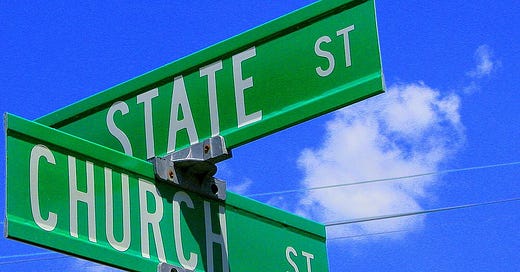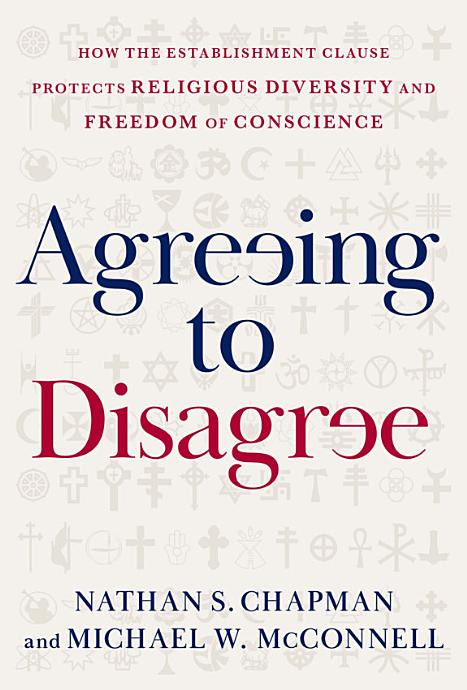Did Oklahoma Just Violate the Establishment Clause?
The legality of a new charter school hinges on the details of its funding
One of the most contentious areas of law and religion is government funding of religious institutions, including schools, hospitals, churches, and social service agencies. Funding takes many forms: tax benefits (which may include exemptions, credits, or other mechanisms), grants, contracts, appropriations, and in-kind benefits.
Since its 1947 decision in Everson v. Board of Education, the Supreme Court has issued dozens of opinions on government funding of religious institutions, the vast majority of which have involved religious schools. Until recently, the Court’s guidance has been difficult to follow and often inconsistent. The past few years have led to greater clarity and significantly lessened the restrictions on government funding of religious institutions.
In the News
Earlier this month, an Oklahoma school board voted to approve an online public charter school that would serve K-12 students across the state. The school, St. Isidore of Seville Catholic Virtual School, would be the country’s first publicly funded religious charter school.
Oklahoma’s attorney general asserted that “the approval of any publicly funded religious school is contrary to Oklahoma law and not in the best interest of taxpayers.” In contrast, Oklahoma’s governor declared the new school “a win for religious liberty and education freedom in our great state” and noted that he was “encouraged by these efforts to give parents more options when it comes to their child’s education.”
Writing in the New York Times, columnist David French called the school board’s decision “mistaken.” He acknowledged that charter schools “tend to operate separately from local public school districts (and often have private management).” But according to French, “charter schools are public schools, meaning that Oklahoma has created and sanctioned a Catholic public school in the state” and “has clothed a Christian institution with state authority.”
In the National Review, Notre Dame law professor Rick Garnett challenged French’s interpretation. Garnett argued that “French misses the fact that, in Oklahoma, charter schools do not function as state schools.” He elaborated:
The mere fact that these schools have been invited to cooperate with the government in the provision of quality education, and that the government is paying for that education, does not make these schools government departments, arms, agencies, or subdivisions of the government, any more than a Baptist hospital becomes the government when it is reimbursed by Medicaid, or Lockheed Martin becomes the government when it fulfills a contract to build military aircraft.
In Garnett’s view, charters are “essentially government contracts,” not state schools.
In my Head
French’s argument hinges on his characterization of charter schools as “creations of state law, highly regulated and publicly funded.” But this can’t be constitutionally dispositive. Religious nonprofits, religious hospitals, and even churches are all highly regulated and, in some ways, publicly funded. For example, while churches rightly receive many constitutional protections, they are still subject to dozens of laws and regulations, including parking restrictions, noise ordinances, fire codes, child safety laws, and copyright laws. They also receive public funding through tax exemptions, tax benefits, and aid provisions like the recent COVID relief. Moreover, churches are typically incorporated under state and federal nonprofit laws, making them at least in some sense “creations of state law.”
Garnett, I think, has the better argument. But he blurs an important distinction when he argues that “the Supreme Court has made clear that governments may not discriminate against religious institutions that are otherwise eligible for public benefits and contracts.” In my view, if charters are like government contracts, then the state may fund a religious charter school but is not required to do so.
Garnett is right that the government may not overtly discriminate against religious institutions. For example, it cannot deny funding on an expressed dislike of “religion” generally or a specific religious tradition like Catholicism. Relatedly, neither the Establishment Clause nor state-level restrictions on funding of religious schools provides a compelling interest sufficient to override a free exercise challenge from a religious organization denied funding from a generally available benefits program. As I’ve argued elsewhere, some forms of generally available funding will inevitably reach religious organizations in a pluralistic society. These funding mechanisms operate akin to public forums: they provide government resources to support diverse and often contradictory viewpoints.
But the Oklahoma charters do not appear to be a generally available benefits program. Government contracts typically draw from a legislative appropriation for a targeted governmental need or policy interest that need not reflect the goals of pluralism. As I argued in my 2016 book, Confident Pluralism, “there is a conceptual difference between conditioning the award of discretionary grants and contracts on the one hand, and precluding access to a forum whose purpose or function is to facilitate a diversity of viewpoints and ideas.”
One wrinkle to the distinction I’m drawing above is the Supreme Court’s decision last year in Carson v. Makin. The case involved a Maine program that provided private school tuition assistance to parents living in school districts without public secondary schools but limited the benefit to “nonsectarian schools.” The Court’s 6-3 decision held that excluding religious schools violated the First Amendment’s Free Exercise clause. Chief Justice Roberts’ opinion noted that the Court had “repeatedly held that a State violates the Free Exercise Clause when it excludes religious observers from otherwise available public benefits.” Quoting from the Court’s earlier decision in Espinoza v. Montana Department of Revenue, Roberts emphasized that “a State need not subsidize private education . . . but once a State decides to do so, it cannot disqualify some private schools solely because they are religious.”
The question left open by Carson is whether the Court’s reasoning about “otherwise available public benefits” extends to discretionary grants and contracts. If it does, then the conceptual distinction I’m making might fall away. But it’s not clear to me that Carson either implies or requires such an extension. And if it does, then the Court will need to provide limits and guardrails to prevent eligibility for discretionary benefits from becoming entitlement to those benefits.
In the World
The issues in this post called to mind a timely new book by law professors Michael McConnell and Nathan Chapman, Agreeing to Disagree: How the Establishment Clause Protects Religious Diversity and Freedom of Conscience. Their principal thesis is that the Free Exercise Clause and the Establishment Clause “work together” rather than operate in tension with one another. According to McConnell and Chapman, the tension only arises from “the widespread idea that the point of the Establishment Clause is to protect a secular public sphere from the dangerously divisive and irrational impulses of religion.” This idea, they argue, is neither historically plausible nor normatively attractive.
McConnell and Chapman also see a broader role for a properly understood Establishment Clause in contemporary society:
If the Establishment Clause were properly understood and comprehensively implemented, its very existence would dampen the fever of our extreme polarization, because it would guarantee that neither side can use its momentary political power to impose an orthodoxy and suppress disagreement. Each of us then could focus on living our own lives in accordance with conscience, expressing our beliefs to our children and to willing listeners, and evaluating public policies on their merits rather than on whether their adoption will empower “the other side.”
Agreeing to Disagree is a well-written overview of a notoriously ambiguous area of constitutional law. It also supports the kind of argument Garnett makes in response to French and suggest why the Supreme Court’s openness to government funding of religious schools is not as anomalous as some critics have suggested.







Excellent. I put the McConnell and Chapman book in the Wish List.
John, what is interesting is that Australia, for all it's secularity, provides government funds for religious schools, whether Catholic, Christian, Muslim, Jewish, or Independent. So there are models of secularism that can accomodate government funding for religious schools, albeit with certain strings attached.